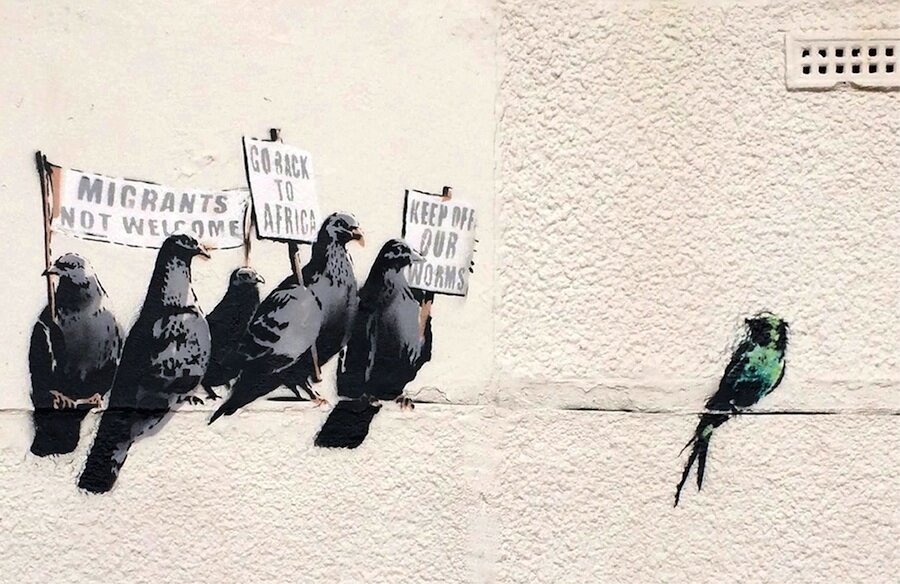Did a small English town destroy a Banksy mural worth a fortune?
Loading...
Officials in England who had a painting by street artist Banksy grayed out, saying it was offensive and racist, apparently didn't know it was by the internationally renowned artist.
The work, which was painted on a wall in Clacton-on-Sea in Essex and preserved in a photograph taken by Banksy, showed five gray pigeons holding signs including one that read “Go back to Africa” toward a smaller, more colorful, migratory bird.
The Guardian reported the piece by the controversial graffiti artist appeared a week ahead of a byelection in the town, triggered by the decision of local Conservative MP, Douglas Carswell, to defect to the UK Independence Party (Ukip). Ukip has argued that Britain’s immigration policies are too lax.
Tendring District Council said it removed the piece after it received a complaint that the mural was “offensive” and “racist,” and admitted it didn’t know it was a Banksy, the BBC reported.
It had been painted over before Banksy, who has remained largely anonymous despite his fame, even announced it on his website.
The Guardian reported that Nigel Brown, communications manager for the council, said: “The site was inspected by staff who agreed that it could be seen as offensive and it was removed this morning in line with our policy to remove this type of material within 48 hours.
“We would obviously welcome an appropriate Banksy original on any of our seafronts and would be delighted if he returned in the future.”
A spokeswoman for Banksy told the BBC the artist would not be commenting further on the Clacton piece.
The work could have been worth £400,000, according to Metro.
The artist, whose works have been cut from walls and fetched hundreds of thousands of pounds, is known for his politically-motivated and satirical street art executed in a distinct stenciling style.







